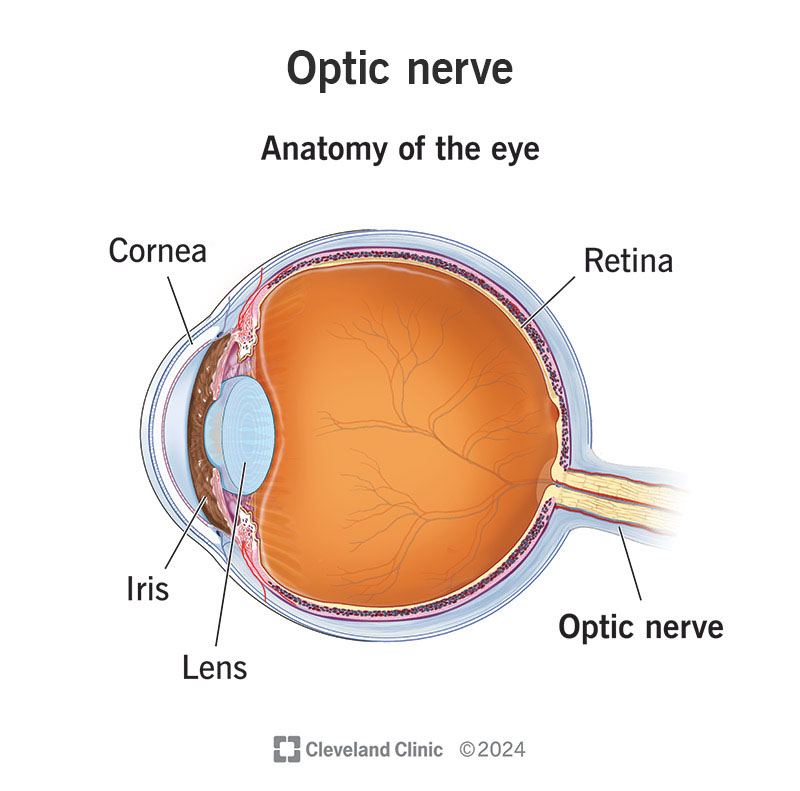Your optic nerve is the connection that lets your eyes send signals to your brain describing what they detect. Your brain takes those signals, processes them and uses them to construct the picture you see. The optic nerve also contributes to certain eye reflexes and your circadian rhythm, which is your body’s internal clock.
Advertisement
Cleveland Clinic is a non-profit academic medical center. Advertising on our site helps support our mission. We do not endorse non-Cleveland Clinic products or services. Policy

The optic nerve is comprised of millions of nerve fibers that send visual messages to your brain to help you see. You have an optic nerve at the back of each eye that connects directly to your brain. Each optic nerve is a one-way connection, and it only carries signals from your eyes to your brain. Some of the signals in the optic nerve also contribute to other abilities and brain processes.
Advertisement
Cleveland Clinic is a non-profit academic medical center. Advertising on our site helps support our mission. We do not endorse non-Cleveland Clinic products or services. Policy
The optic nerve is a critical part of your vision. Your eyes are like cameras, with the retinas at the back of each eye detecting light and converting what they pick up into electrical signals. The optic nerve is like the cable that carries those signals to the computer that is your brain.
The optic nerve is the second of 12 cranial nerves, which get their name from how they all directly connect to your brain. Each cranial nerve is a left- and right-sided pair (but experts commonly refer to them like it’s just a single nerve).
The optic nerve (also known as Cranial Nerve II or CN II) is extra special among the cranial nerves because of how it forms. It’s the only cranial nerve that’s also part of your central nervous system (CNS), along with your brain and spinal cord. The other 11 cranial nerves are part of your peripheral nervous system (PNS).
You have an optic nerve at the back of each eye that connects directly to your brain. To get there, the optic nerves extend out from your retina and travel a route that includes the following:
Advertisement
As it travels through your brain, a small fraction of the nerve fibers branch off to other places in your brain. Those fibers don’t go through processing in the visual cortex. Instead, they support abilities like the following:
These conditions can damage an optic nerve and affect your vision:
Optic nerve problems cause various symptoms depending on the underlying condition. The symptoms may be temporary or permanent. Some of the most common symptoms include (but aren’t limited to) the following:
There are several things you can do that can maintain and protect the health of your optic nerves. They include:
Advertisement
You should talk to an eye care specialist or healthcare provider if you notice gradual vision changes, increases in eye pain or vision loss. That includes things like blurred or double vision. You should seek medical attention immediately if you have sudden vision changes or vision loss, especially if you’ve never had them before.
The optic nerves are like the data cables that link your eyes and brain. It can be easy to take them for granted until they stop working correctly. There are many things you can do to protect your optic nerve health. And if you have any questions about vision changes or ways to help maintain your vision, talk to an eye care specialist. They can offer guidance and resources that can help.
Advertisement
Getting an annual eye exam at Cleveland Clinic can help you catch vision problems early and keep your eyes healthy for years to come.

Last reviewed on 04/11/2024.
Learn more about the Health Library and our editorial process.